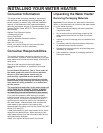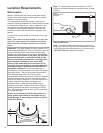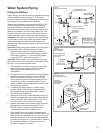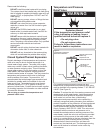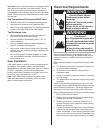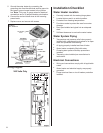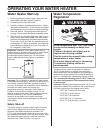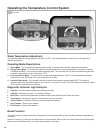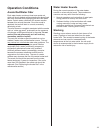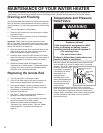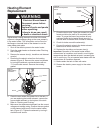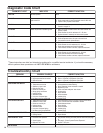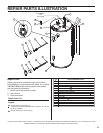
11
Operation Conditions
Anode Rod/Water Odor
Each water heater contains at least one anode rod,
which will slowly deplete while protecting the glass-lined
tank from corrosion and prolonging the life of the water
heater. Certain water conditions will cause a reaction
between this rod and the water. Once the anode is
depleted, the tank will start to corrode, eventually
developing a leak.
The most common complaint associated with the anode
rod is a “rotten egg smell” produced from the presence
of hydrogen sulfide gas dissolved in the water. Do not
remove this rod permanently as it will void any
warranties, stated or implied.
The parts list includes a special anode that can be
ordered if water odor or discoloration occurs. This rod
may reduce but not eliminate water odor problems. The
water supply system may require special filtration
equipment from a water conditioning company to
successfully eliminate all water odor problems.
Artificially softened water is exceedingly corrosive
because the process substitutes sodium ions for
magnesium and calcium ions. The use of a water
softener may decrease the life of the water heater tank.
The anode rod should be removed from the water
heater tank every 3 years for inspection. If the rod is
more than 50% depleted, the anode rod should be
replaced. (See “Replacing the Anode Rod” in the
maintenance section.)
Water Heater Sounds
During the normal operation of the water heater,
sounds or noises may be heard. These noises are
common and may result from the following:
1. Normal expansion and contraction of metal parts
during periods of heat-up and cool-down.
2. Sediment buildup in the tank bottom will create
varying amounts of noise and may cause
premature tank failure. Drain and flush the tank as
directed under “Draining and Flushing”.
Stacking
Stacking occurs when a series of short draws of hot
water (3 gallons or less) are taken from the water
heater tank. This causes increased cycling of the heater
elements and can result in increased water
temperatures at the hot water outlet. An anti-scald
device is recommended in the hot water supply line to
reduce the risk of scald injury.





